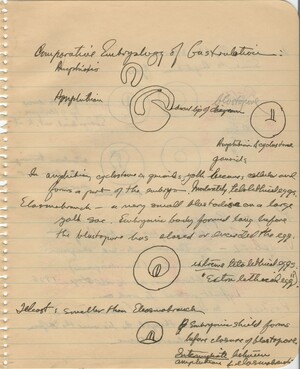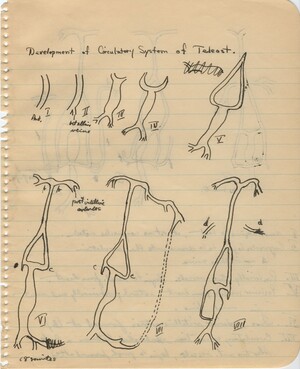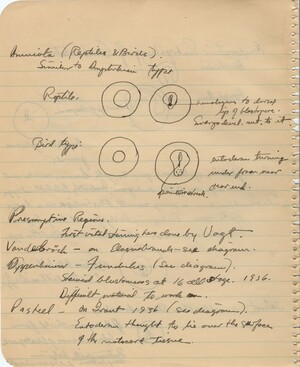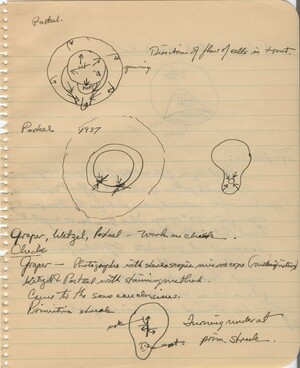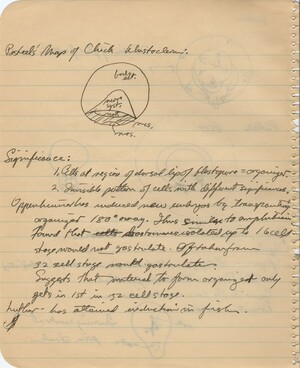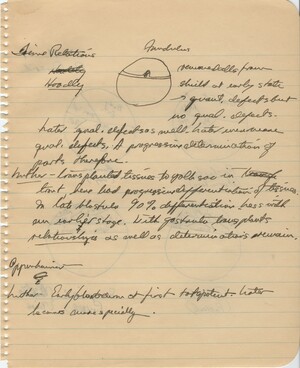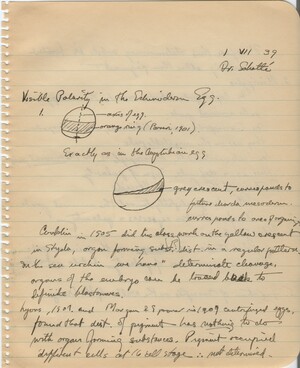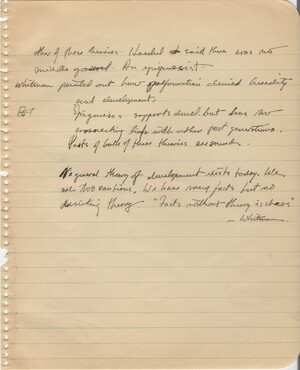Notes
Notes from Hubert Goodrich's lecture. Trinkaus continues notes from page 10. Including a diagram on concrescence and a chart that tracks temperature in cell numbers (y axis) over time (x axis)
Notes from Hubert Goodrich's lecture. Trinkaus begins notes on 'Comparative Embryology of Gastrulation' with notes and diagrams for amphioxus, elasmobranch, and teleost
Notes from Hubert Goodrich's lecture. Trinkaus' diagrams on the 'Development of the Circulatory System of Teleost' with stages I-VII
Notes from Hubert Goodrich's lecture. Trinkaus continues notes on 'Comparative Embryology of Gastrulation' from page 13 with notes and diagrams for Amniota (reptiles and birds). Includes historical notes on Vanderbroeck, Oppenheimer, and Pasteel
Notes from Hubert Goodrich's lecture. Trinkaus continues notes on gastrulation from page 14. Includes a diagram of the 'Direction of flow of cells in trout' and a diagram on the formation of the primitive streak
Notes from Hubert Goodrich's lecture. Trinkaus continues cleavage notes from page 15 with a diagram of Pasteel's map of Chick blastoderm and notes on the signifance of this information.
Notes from Hubert Goodrich's lecture. Trinkaus makes notes on gastrulation in Fundulus, and transplantation experiments
Notes from Hubert Goodrich's lecture. Trinkaus has drawn four colored diagrams of 'Presumptive Regions': Trout, Fundulus, Dog fish, and Urodele
Notes from Hubert Goodrich's lecture. Trinkaus continues notes from page 5 on the movement of nuclear granules early in development, and then begins notes on 'Cleavage'
Notes from Oscar Schotte's lecture. Trinkaus begins notes on the 'Visible Polarity in the Echinoderm Egg' with two labeled diagrams and notes on the history of research on the topic.
Notes from Charles Packard's lecture. Trinkaus concludes his notes from Packard's morning lecture on the history of embryology (begin page 81) with some final thoughts from C.O. Whitman about epigenesis, heredity, and development, ending with the quote, "Facts without theory is chaos."
Notes from Oscar Schotte's lecture. Trinkaus continues notes from page 86 on the metamorphosis of echinoderms with general notes on rudimentary formation. Includes two diagrams (labeled 1 and 2).


